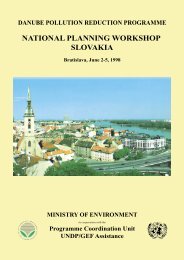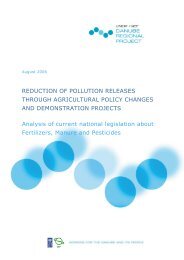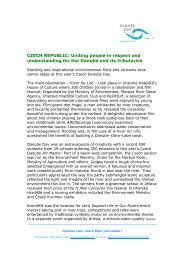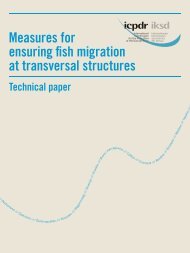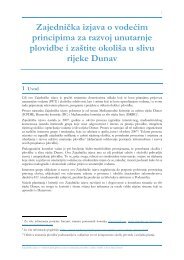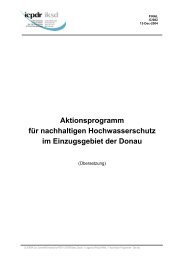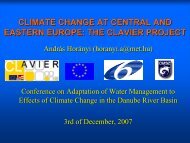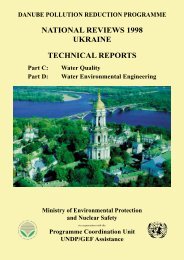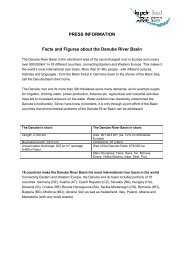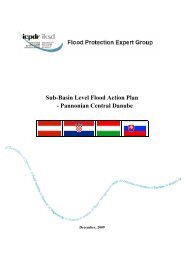Final Report - ICPDR
Final Report - ICPDR
Final Report - ICPDR
Create successful ePaper yourself
Turn your PDF publications into a flip-book with our unique Google optimized e-Paper software.
60000<br />
Suspended solids<br />
50000<br />
concentration of Fe (mg/kg)<br />
40000<br />
30000<br />
20000<br />
10000<br />
0<br />
0 100 200 300 400 500 600 700<br />
Distance (km)<br />
45000<br />
40000<br />
35000<br />
concentration of Fe (mg/kg)<br />
30000<br />
25000<br />
20000<br />
15000<br />
Sediment<br />
10000<br />
5000<br />
0<br />
0 100 200 300 400 500 600 700 800<br />
Distance (km)<br />
Figure 4.1.3.11 Concentration of iron (mg dry weight/kg) in suspended solids<br />
and sediment<br />
Generally it can be concluded that the investigated triplet of compartments as<br />
suspended solids, sediment and mussel tissues contained different amounts of<br />
inorganic pollutants as follows: the suspended solid compartment contains always<br />
bigger amount of any heavy metal component than the sediment. Usually both<br />
compartments have bigger metal contamination than the mussels, except two metals.<br />
Only the Cd and the Zn occurred in higher amounts in the investigated mussel<br />
species than in the suspended solid and sediment phase. The amount of mercury<br />
was the same in the sediment phase and in the mussel tissue. The average<br />
concentration values are illustrated in Table 4.1.3.1.<br />
39



